
Is .22 Hornet an obsolete cartridge? Or does it still have its sting?
The .22 Hornet is an older, somewhat languishing small game rifle cartridge that's slowly heading towards going out with a whimper. However, it has a certain niche that has allowed it to hang on, and for very good reason.
Originally developed as a varmint cartridge, it excels at that role as well as small-game shooting and some other sporting uses.
Its virtues include inherently impressive accuracy, almost nonexistent recoil and enough potency to take bigger game than you might expect. Despite these qualities, it's still not enough to vault the .22 Hornet to best-seller in today's crowded marketplace.
So, what should you know about .22 Hornet? Let's dive in…
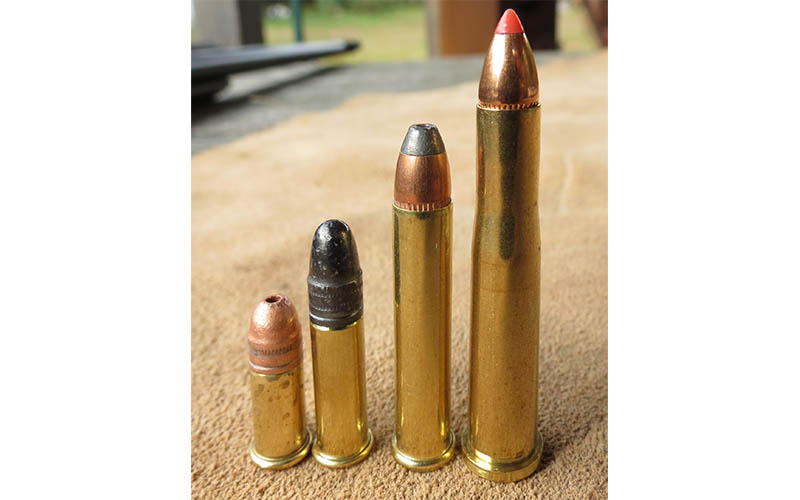
What Is The .22 Hornet, Anyway?
The roots of .22 Hornet lay in .22 Harwood Hornet, a black powder wildcat cartridge devised by a late 19th-century gun writer named Reuben Harwood. Harwood necked .25-20 down to .22 caliber, and that lineage—a rimmed case with tapered neck—is still very visible.
In the 1920s, Townsend Whelen and G.L. Wotkyns began experimenting with hot-rodding the .22 Winchester Centerfire at the Springfield Armory. Their experimental cartridge had outstanding velocity for a small powder load, barely any recoil to speak of and excellent accuracy potential.
Winchester liked the idea so much it created a new centerfire rifle case and started cataloging the cartridge in 1930 (and named it .22 Hornet to honor Harwood) with the first commercial rifles appearing in 1932.
Right away, it was beloved by varmint and small game hunters and target shooters, though it was noted right away to be nearly useless on larger game.
The US Army and Air Force took note, issuing a number of survival rifles (such as the M4, M6 and AR-5/M1) chambered in .22 Hornet and issued with 35-grain ball or 45-grain soft-points for hunting small game. The issued boxes of the day were thusly labeled to ensure compliance with the Hague Convention.

Outside the US, it still sees some use in Australia and in Europe as a small game or target cartridge. In sporting use, it sees some action in metallic silhouette shooting, though not in overwhelming numbers.
.22 Hornet Ballistics: Practical Range And Trajectory
Conventionally, the best range for .22 Hornet is roughly 150 yards and in, but it could be taken out to 300 yards with the right load…and possibly a bit further with handloading.
Any .224-caliber projectile can be loaded, but 35- and 45-grain loads are the most common factory options. The typical factory velocity of a 35-grain .22 Hornet is close to 3,000 feet per second with around 730 foot-pounds of energy from a 24-inch barrel.
Here, for instance, is a trajectory table for Remington's Premier AccuTip 35-grain loading. All tables were made using ShootersCalculator with a 100-yard zero, a 1.5-inch sight height, a 10 mph 90-degree crosswind and zero corrections for atmosphere.

AccuTip's specifications (G1 of .109, velocity of 3,100 fps) are representative of most of the 35-grain loads. As you can see, it loses velocity quickly.
However, if you were to handload a Hornady 55-grain projectile (G1 BC of .243) to around 2,650 fps…the story changes.
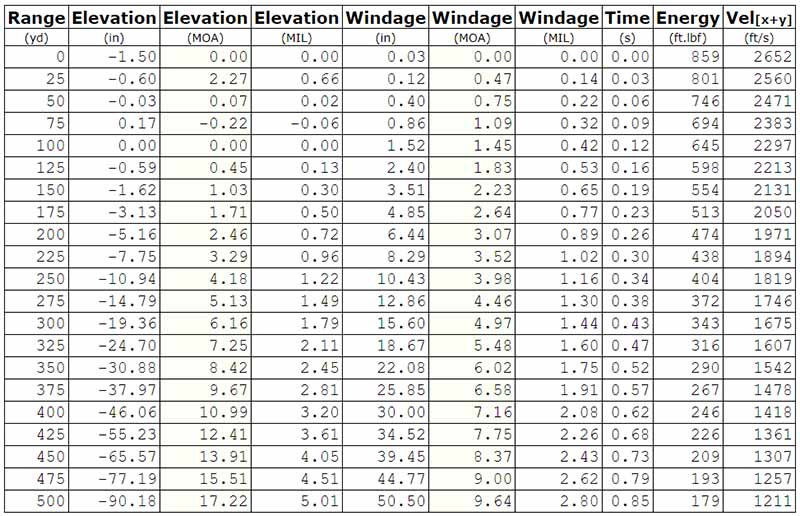
That 55-grain handload would have no issues dispatching coyotes out to 300 yards and would even be serviceable for small-bodied whitetails or other smaller game animals at modest ranges, so long as one used a soft-point bullet rather than an FMJ.
So, the sad truth of .22 Hornet is that it suffers from a lack of optimization that frankly wouldn't take much to achieve…but it's also the case that there's almost no point. Why bother when .223 Remington rifles are so much cheaper and more available?
What Is The .22 Hornet Good For?
Based on most factory load data, .22 Hornet is theoretically usable for deer at short ranges (inside 100 yards) where it is legal.
As mentioned, you can handload and get better results (to the point where it's usable on small game at modest ranges), but .223 Remington is still going to be better and cheaper.
Its best use is as a small-game and varmint cartridge for squirrels (arboreal and terrestrial), raccoons, coyotes, prairie dogs, rabbits and other pests (or small, edible critters) almost anywhere except the open spaces of the western states.
.22 Hornet Wildcats: .22 K-Hornet And .22 Ackley Hornet?
A couple of wildcats using .22 Hornet as a parent case have emerged over the years, including .22 K-Hornet (developed by Lysle Kilbourn) and .22 Ackley Improved Hornet, both of which blow out the shoulder to hold more powder.
.22 K-Hornet and .22 Ackley Improved Hornet add up to (roughly) 200 fps of additional velocity, which isn't trivial, and does modestly extend the effective range of .22 Hornet. The conversion is simple, as all that's required is reaming the chamber, but the issue is ammunition.
Getting .22 Hornet factory ammunition is already difficult; .22 K-Hornet and .22 Ackley Improved Hornet are strictly for handloading, and factory brass is not the most common. Cases can, of course, be fire-formed, and these chamberings are known for having longer-lived brass than other wildcats.
Is The .22 Hornet Obsolete?
Frankly, its days are numbered. The niches it occupies are so small that there are hardly any new production guns chambered for it, and little ammunition made for it. It's primarily a cartridge still shot by those who already own .22 Hornet firearms, not something most people today are seeking out.
To get the absolute best of it, you need to handload…but, again, .223 Remington does everything it does, does it better, and for much less money.
It is the case that .223/5.56 does have more recoil; .22 Hornet produces less than 2 foot-pounds of recoil, but .223 usually produces around 4 foot-pounds in a rifle of the same weight. There aren't too many people who can't handle 4 foot-pounds of recoil, so how much does that really matter?
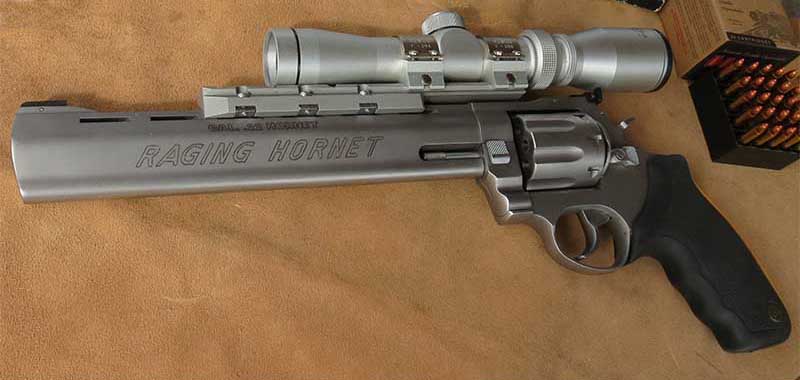
What is of much greater concern than the recoil is the current availability of .22 Hornet arms and ammunition. New-production firearms chambered for it are practically non-existent, so you’ll most likely have to go to the used market to find the one you want. Retailers that do have some available appear to have a limited selection of models and very little stock. Of the firearms that were made for the cartridge, most are hunting-style or survival rifles, but a few revolvers have been chambered for it as well.
Ammunition availability is a similar story. At the time of writing, AmmoSeek has less than a page of results for .22 Hornet, and of those listings, there are only four load varieties between the various retailers. The cheapest is still over $1.50 per round.
While it’s fair to say that the availability of .22 Hornet ammo is lacking, it is still obtainable. Presuming that you already have a firearm chambered for it, what are the best loads to buy?
The 6 Best .22 Hornet Loads
Winchester Super-X 46-Grain JHP
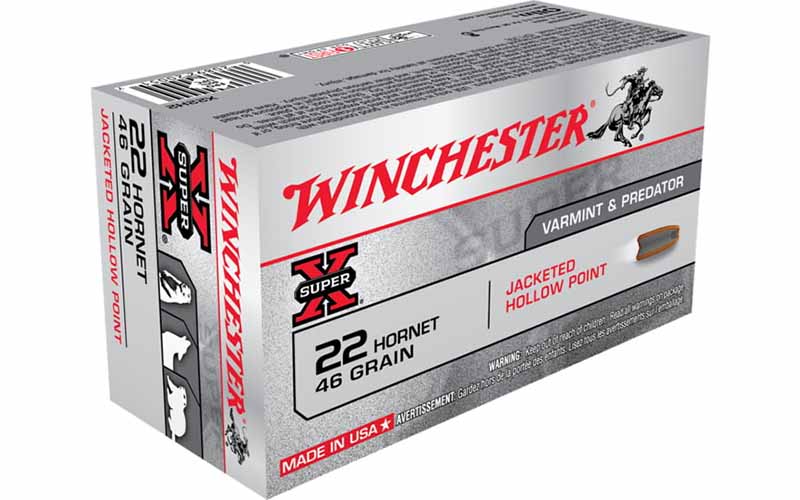
Winchester Super-X gives you an (relatively) affordable varmint and predator round, but more importantly, it’s currently the most available factory load. Beggars can’t be choosers after all, and if you want to shoot .22 Hornet, this will be the easiest to find in stock.
- Bullet Weight: 46 grains
- Projectile Ttype: Jacketed hollow point
- Muzzle Velocity: 2,690 fps
- Muzzle Energy: 739 foot-pounds
- G1 BC: Unpublished
- MSRP: ~$90 per box of 50
Sellier & Bellot 45-Grain Soft-Point
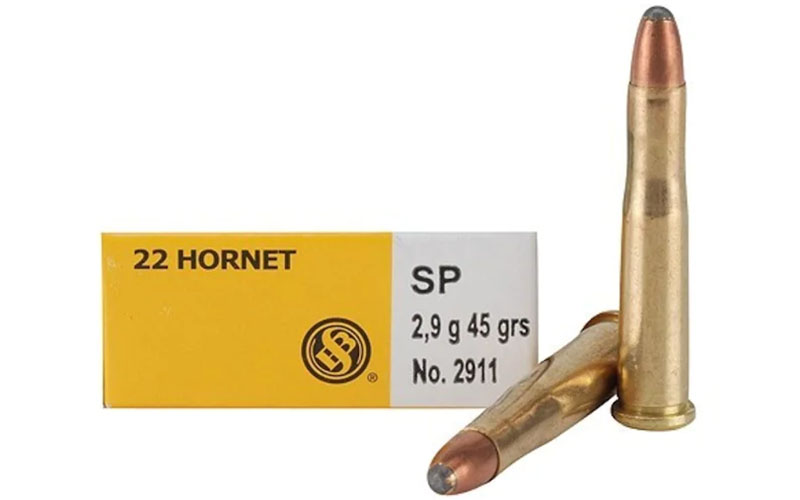
When in stock, S&B's 45-grain soft-point load is one of the most affordable .22 Hornet loads available. S&B also offers a 45-grain ball load, but it's (oddly enough) more expensive. If you wanted inexpensive range ammo, this is about as good as it gets.
- Bullet Weight: 45 grains
- Projectile Type: Jacketed soft-point
- Muzzle Velocity: 2,346 fps
- Muzzle Energy: 550 foot-pounds
- G1 BC: 0.138
- MSRP: ~$25 per box of 20
Explore the Best of the .22 Caliber
- Best .22 LR Pistol – Stacking up the .22 Cal Pistol Options Today
- .22LR for Self-Defense? – Considerations for .22 LR Carry
- Top Ruger .22 Handguns You Should Know About
Hornady Varmint Express 35-Grain V-Max
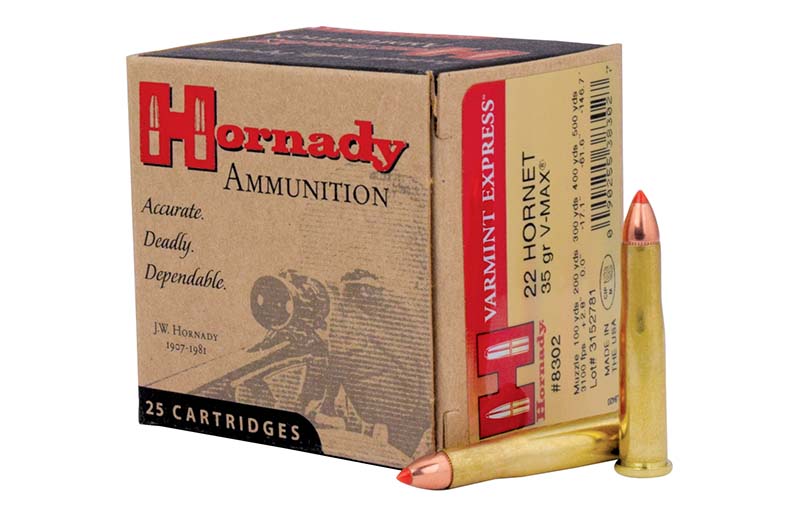
A quality high-velocity load for prairie dogs and other small critters that can hit hard enough to put them down out to 300 yards. It's also one of the most commonly available at the time of writing.
- Bullet Weight: 35 grains
- Projectile Type: Tipped boattail hollow point
- Muzzle Velocity: 3,100 fps
- Muzzle Energy: 747 foot-pounds
- G1 BC: 0.109
- MSRP: $30 to $50 per box of 25
Prvi Partizan 45-Grain Soft-Point
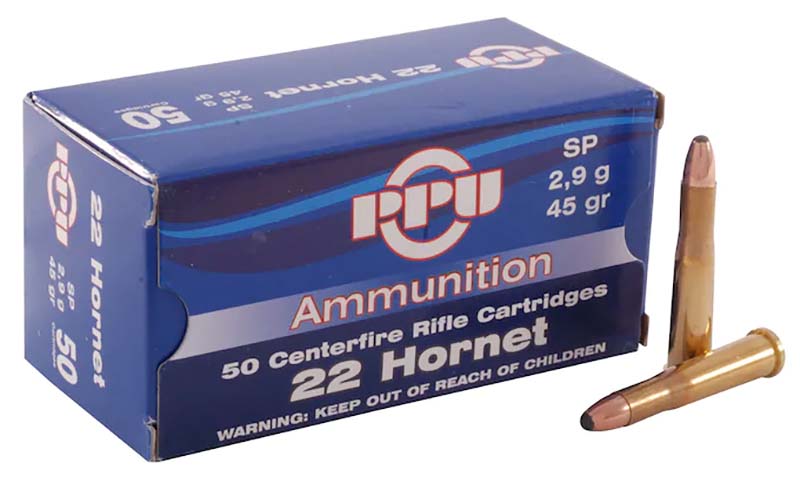
Another inexpensive do-it-all load, Prvi Partizan's 45-grain soft-point load is almost identical to S&B's, but it comes in boxes of 50 instead of 20.
- Bullet Weight: 45 grains
- Projectile Type: Jacketed soft-point
- Muzzle Velocity: 2,427 fps
- Muzzle Energy: 589 foot-pounds
- G1 BC: Unpublished
- MSRP: ~$40 per box of 50
Federal Premium Green Hollow Point 30-Grain Speer TNT

Featuring a projectile with a thin copper jacket around a compressed metal core, this is a high-velocity varmint load for jurisdictions (or if you're just conscientious about these things) where hunting ammo must be lead-free.
- Bullet weight: 30 grains
- Projectile type: Lead-free copper-jacketed hollow point
- Muzzle velocity: 3,150 fps
- Muzzle energy: 661 foot-pounds
- G1 BC: 0.091
- MSRP: ~$75 per box of 50
Nosler Custom 40-Grain Ballistic Tip
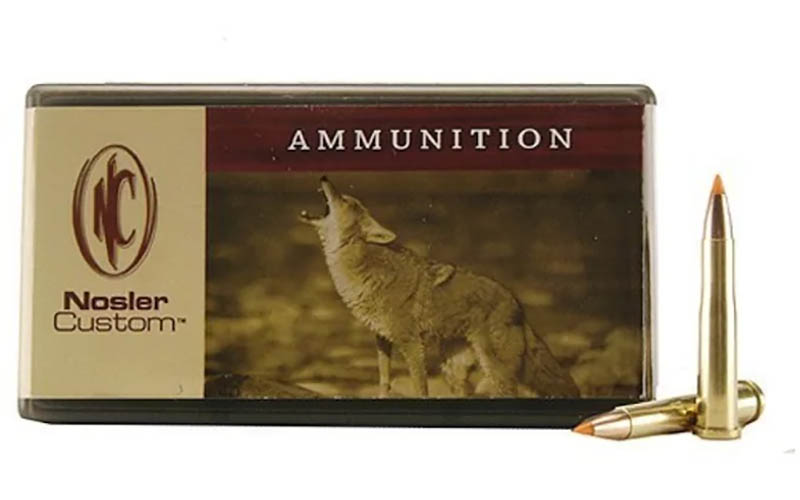
If you wanted a .22 Hornet load with longer legs, Nosler Custom's 40-grain BT load is the best candidate. However, it is expensive and hard to find, so it’s not the best choice for everyday shooting.
- Bullet weight: 40 grains
- Projectile type: Tipped boattail hollow point
- Muzzle velocity: 2,850 feet per second
- Muzzle energy: 721 foot-pounds
- G1 BC: 0.221
- MSRP: ~$110 per box of 50
Raise Your Ammo IQ:

Next Step: Get your FREE Printable Target Pack
Enhance your shooting precision with our 62 MOA Targets, perfect for rifles and handguns. Crafted in collaboration with Storm Tactical for accuracy and versatility.
Subscribe to the Gun Digest email newsletter and get your downloadable target pack sent straight to your inbox. Stay updated with the latest firearms info in the industry.

![Best Concealed Carry Guns In 2025 [Field Tested] Wilson Combat EDC X9S 1](https://gundigest.com/wp-content/uploads/Wilson-Combat-EDC-X9S-1-324x160.jpg)


![Best 9mm Carbine: Affordable PCCs [Tested] Ruger Carbine Shooting](https://gundigest.com/wp-content/uploads/Ruger-Carbine-Shooting-100x70.jpg)
![Best AR-15: Top Options Available Today [Field Tested] Harrington and Richardson PSA XM177E2 feature](https://gundigest.com/wp-content/uploads/Harrington-and-Richardson-PSA-XM177E2-feature-100x70.jpg)

Do you have the Hornady Varmint Express 35-grain V-Max in stock for shipment to Zip 78028 ?
For “varmint” hunting, .223 Remington has the overall advantage for sure; for true “small game” hunting, .223 is overkill, as in unacceptable, at least with factory ammunition. while .177 HMR is the obvious “solution” for small game hunting, there is still a need, in my opinion, for a centerfire small game cartridge with longer reach than .177 HMR. It needs high accuracy and bullets to minimize meat damage; it would not be popular with shooters satisfied with kills based on “explosive” ammunition to compensate for inaccurate shooting. If 22 Hornet is truly fading, perhaps we need an entirely new, more modern cartridge design, along the lines of a 6.5 Grendel but scaled down to .22 caliber.